A membership application form is a document that is used to gather personal or transactional information from potential new members of an organization, company, or club.
This information can be used to determine if someone is eligible for membership and to contact them about the benefits of joining. Most membership forms include questions about the potential member’s name, address, contact information, date of birth, occupation, and other relevant details.
The application forms can be used by a variety of organizations, including businesses, social clubs, trade unions, and political parties. The applications can also be used to track members’ progress through the application process and keep records of members of the organization.
Form Examples
The templates are important documents that help an organization acquire new members and retain their existing members. This document assists in tracking the contact information of all the members, and thus it becomes easier for any company or club to get in touch with their customers.
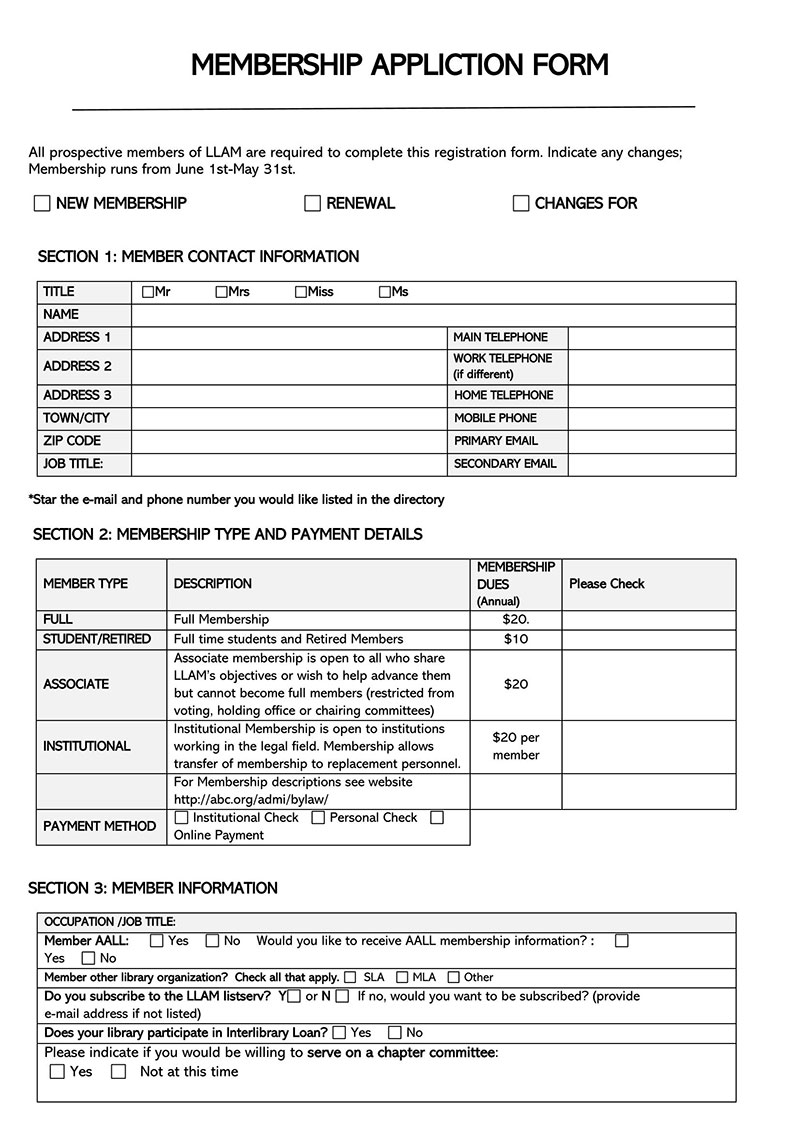
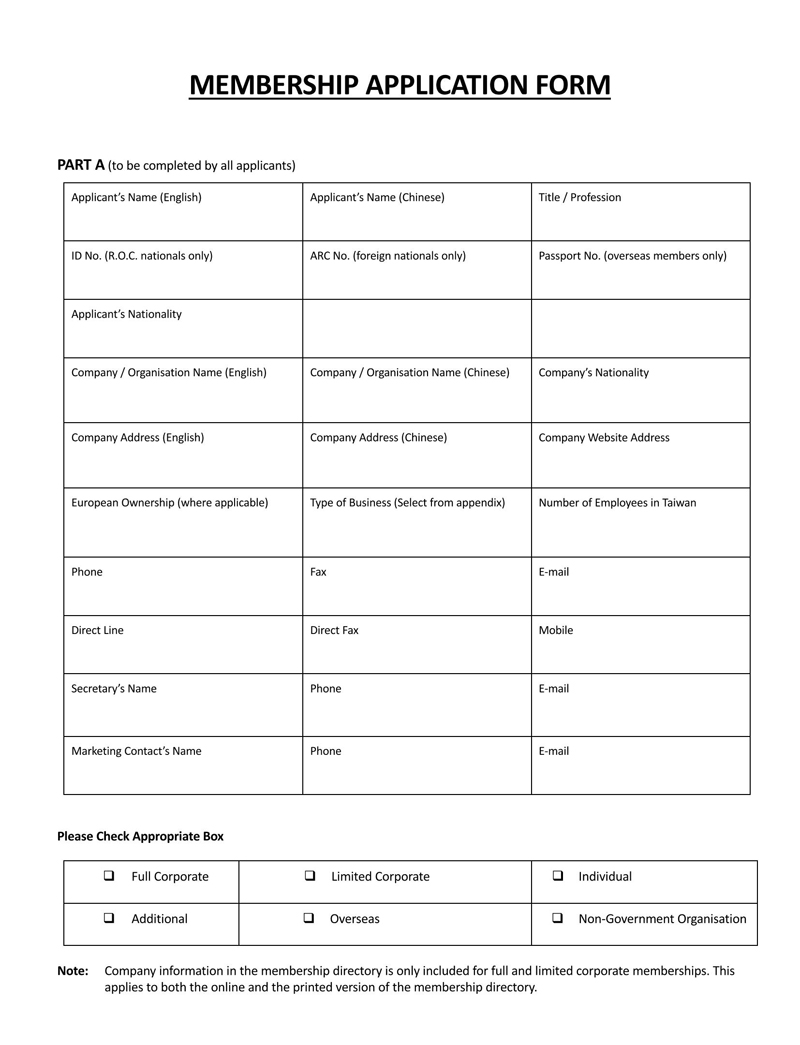
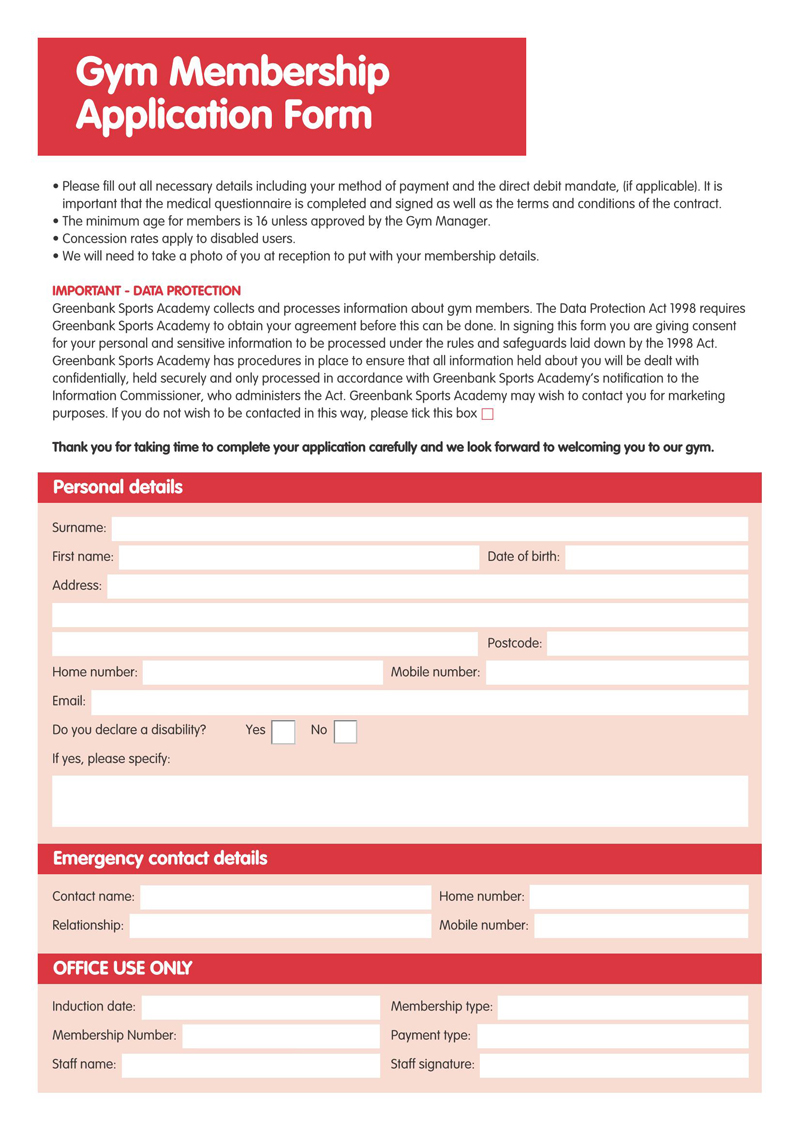
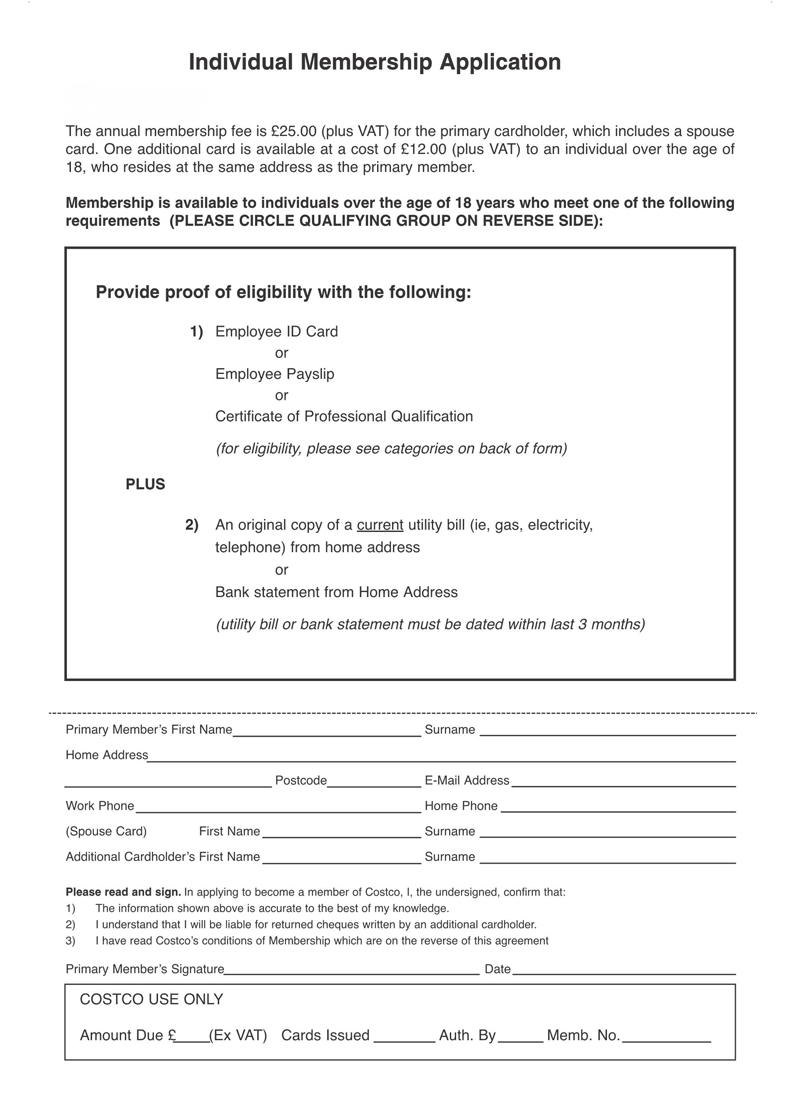
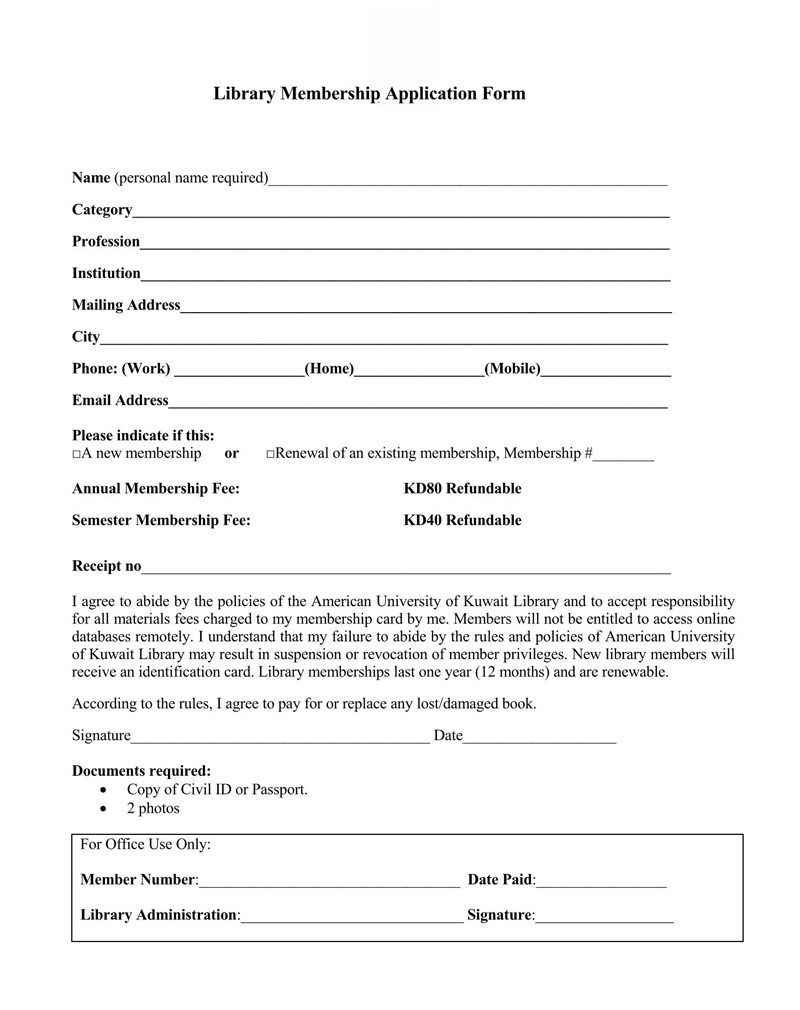
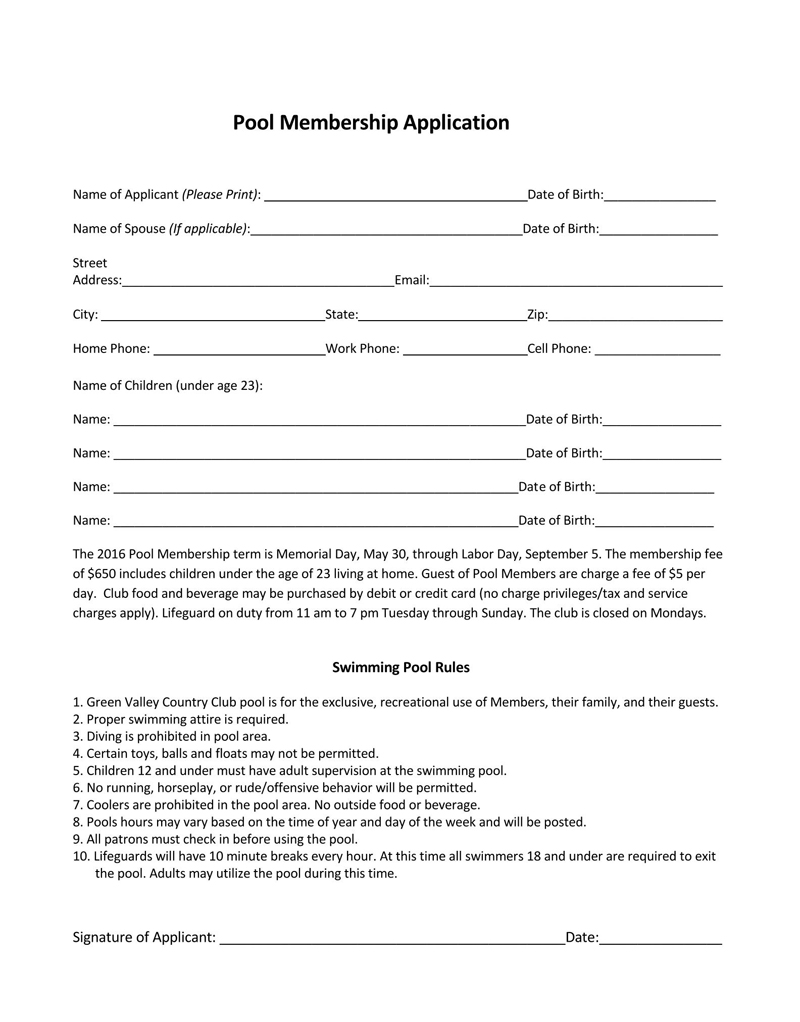
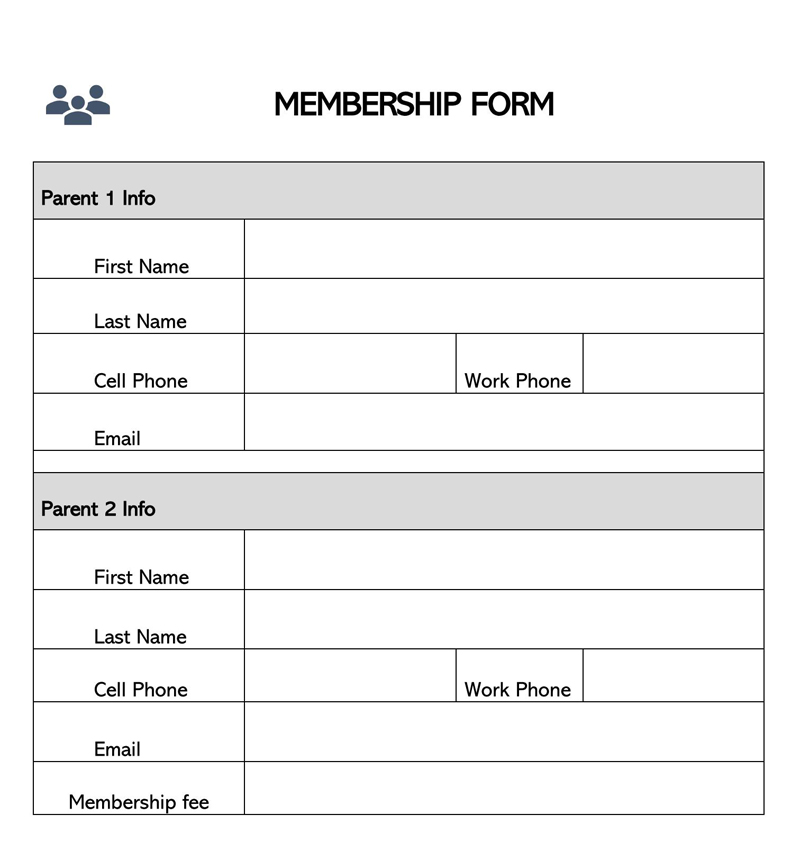
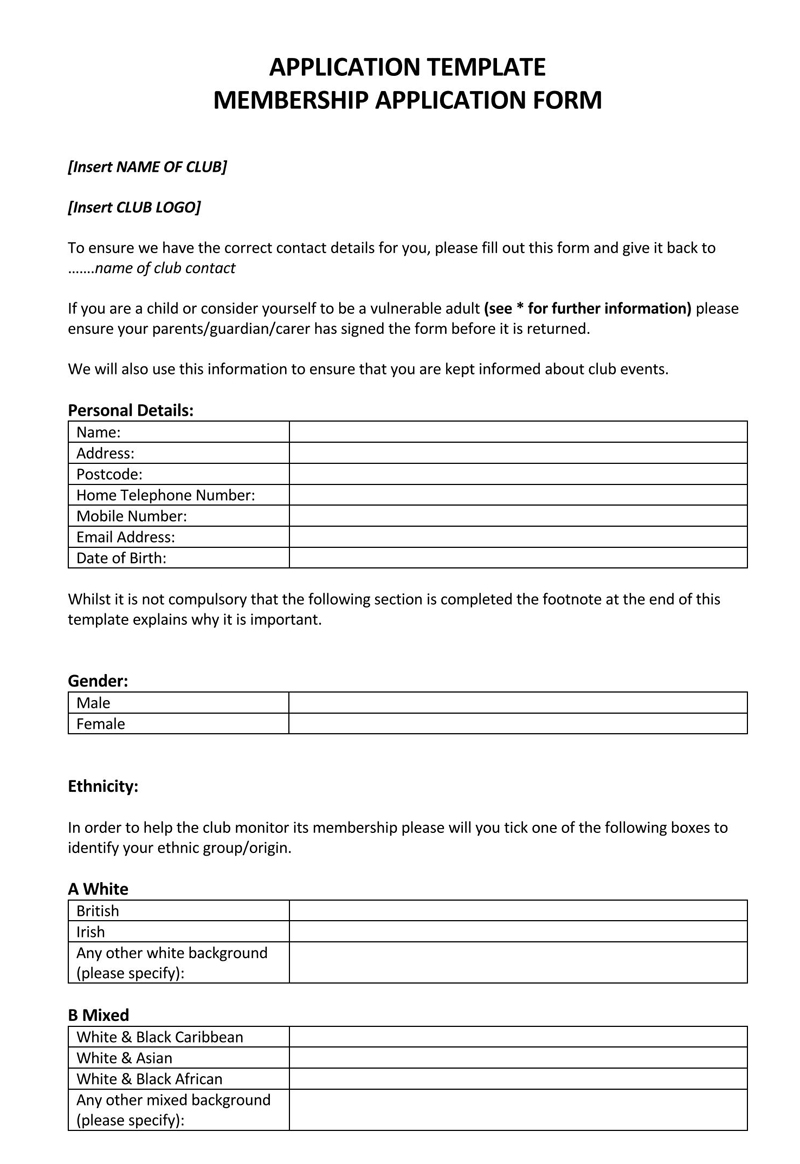
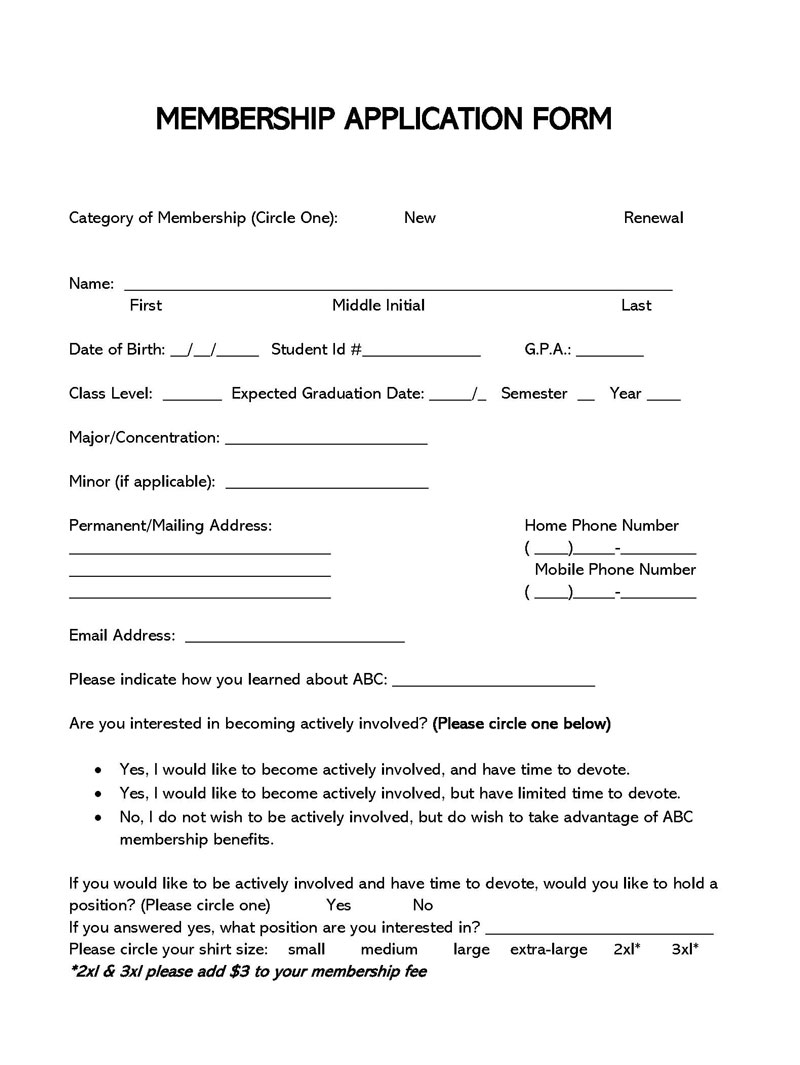
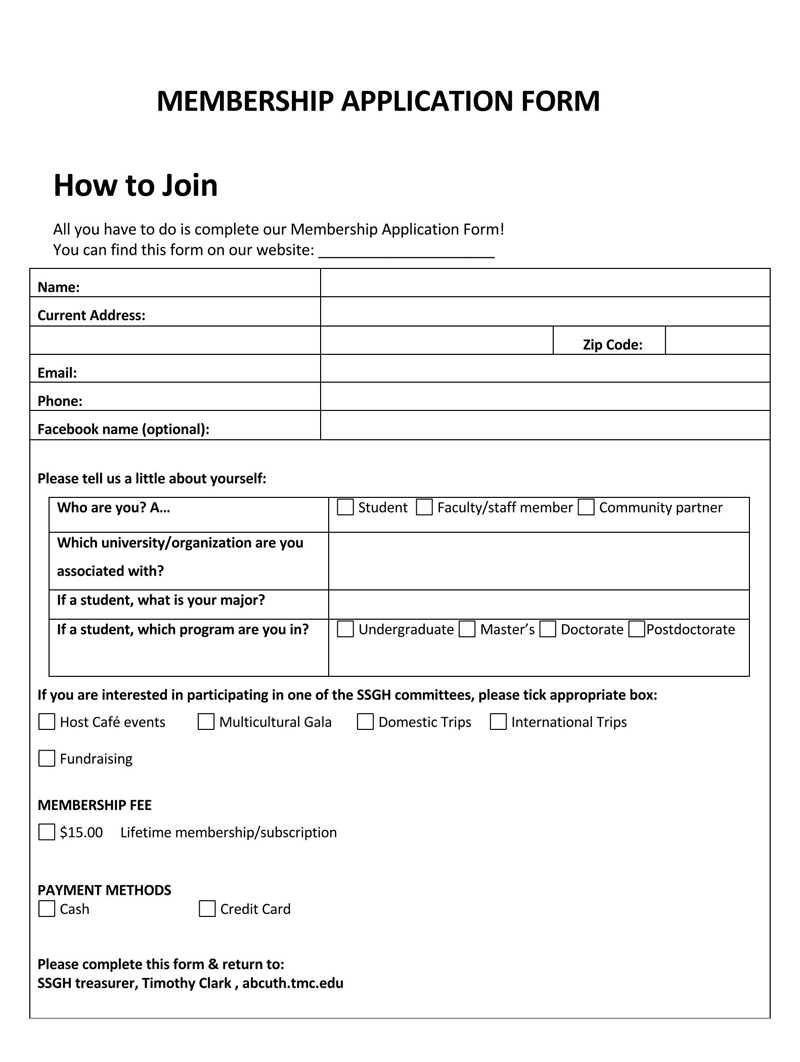
Types of Membership Forms
There are two major types of these forms:
Printable membership forms
A printable form is a form that can be downloaded and printed on paper for members who want to join the organization. It contains all relevant information and can be filled out and submitted by hand or sent through the post. The main drawback of these types of forms is that the data entered by the members cannot be easily changed. A printable form can also get misplaced or lost, leading to problems in tracking the members.
Online membership forms
An online form can be filled out and submitted online. It is relatively easier to maintain, update and retrieve the data because there is no risk of paper getting lost or misplaced. This can also make it easy for the organization to track whether a member has paid his dues, etc., because all information can be easily accessed from one place. They are also more secure and less prone to fraud than printable forms.
Essential Components
Membership application forms can be formal or informal and usually include background information such as the applicant’s name, address, identification number, and contact information. In addition, the forms may request professional credentials to help establish a person’s suitability for membership.
Other key details that may be requested on the application form include:
Membership types and their entry fees
The first item that should be included in the form is a list of the different types of membership and their associated fees. This will help potential members understand what they are applying for and can assist in their decision-making process.
Membership requirements
In order to join an organization, there may be certain prerequisites that need to be met. These could include having a certain occupation, belonging to a certain religion, or to be living in a specific geographic area. The form should list these requirements so that the potential member knows what is needed to join.
Subscription terms
Some organizations have a specific time-period for which the membership is valid, while others allow members to keep their membership for as long as they wish. It is important to include this information on the form so that potential members are aware of how long their membership will be valid for.
Contact information
The form should ask for the applicant’s name, organization name, address, telephone number, and the best time to contact them. This will allow the organization to contact applicants for more information or to invite them to events.
Personal information
Most forms request some personal information that can be used to assess or identify individuals. This could include questions about the applicant’s date of birth, marital status, education level, and other relevant details.
Conditions of membership
In order to join an organization, the applicant may be required to agree to certain terms and conditions. For example, they may need to agree not to engage in any illegal or inappropriate activities while they are a member of the organization. The application should include this information so that applicants know what to expect.
Acceptable payment methods
Memberships can often be paid for in cash, cheque, or credit card. Details about how these payments can be made must be included in the form.
Details on the application process
Another key item that should be included on the form is information about the application process. This could include the steps that need to be taken, the required documents, and the time frame within which the application needs to be completed.
Previous memberships
Many organizations require potential members to provide information about previous memberships they have held. This could include other organizations that the applicant had previously joined or if they are a current member of another organization and other pertinent details. This information helps the organization determine if the potential member is suitable for membership.
Requirements for membership renewal
Most organizations have a policy on membership renewal, which should be included on the form. This could include the amount that needs to be paid for renewal, when it needs to be paid, and other relevant details. This allows members to renew their membership in an organized and timely manner.
References or sponsors
In some cases, applicants for membership may need a reference from another person in order to complete the application process or join an organization. This could include a letter of reference from a previous employer, an individual who has known them for a particular length of time, or another individual who can vouch for them.
Region or affiliate information
Some organizations have a specified region in which they operate, and potential members may need to provide contact information about where they live, work or go to school. In some cases, applicants may need to confirm that they reside in a specific geographical region before completing the application process.
Additional Items
Additional items that can be included on the form include:
Membership benefits
These could include a discount on event tickets, access to exclusive members-only content, or other benefits.
A FAQ page or its link
This could provide potential members with answers to some of the most commonly asked questions about the organization.
Personal or professional interests
The form could ask potential members about their personal or professional interests to put them in touch with other members who share similar interests.
Committees/task forces/volunteer positions
Some organizations require potential members to provide information about their interest in committees, task forces, or volunteer positions before they are allowed to join. This helps the organization determine if there is a potential match for these positions.
Privacy/sharing
Organizations may want to know how much information potential members are willing to share with the organization. This could include contact information, their age, or other personal details.
Essential Tips to Consider
When creating an engaging form, you should keep in mind the following tips:
Divide the form into sections
When designing the form, it is important to divide it into different sections so that it is easy for the members to understand and fill out. The different sections could include personal information, contact details, payment history, etc.
Also, consider using separate grouped fields to make it much easier for the members to fill out the form or use an online application which allows to carry out a multi-step process, enabling the applicants to get from one section to the next. Bold colors and huge fonts can also be used to make the form not seem too long.
Communicate using typeface, color, and graphics
Use different fonts, colors, and graphics to communicate the information more appealingly. This will help grab the members’ attention and make it easier for them to understand the form.
For instance, if you are a community-based organization, you should consider using colors that represent what you stand for- an organization that anyone from the community can relate to easily. Alternatively, if you are trying to appeal to a more formal audience, consider using appealing backgrounds, use formal wording and incorporate your company logo or other visuals that will help anyone in your organization.
Make the form user-friendly
Use an easy-to-read font and make sure all the fields are properly labeled. This will help in avoiding any confusion on the part of the members.
Be concise
Do not ask for too much information from the members. The form should only contain the relevant details that are needed for membership purposes.
Keep a friendly tone
The tone of the form should be friendly and welcoming in order to encourage the members to fill it out. It should be in line with your audience and should convey the nature of your business. Nevertheless, it is important to note that, regardless of the tone you use, your questions should always be positive and easy to understand and answer.
Follow-up with a confirmation email or letter
After the members have filled out and submitted the form, send them a confirmation email or letter thanking them for their participation and containing all the relevant information about their membership. This will help avoid any confusion and ensure that the members are fully aware of their membership status.
Benefits of Online Membership Form
An online form is a web-based form that can be filled out and submitted by the members online. These forms are more secure than printable forms.
Other benefits of using online forms include the following:
Saves time and effort
There is no need to print, mail, or courier the form. The members can fill out the form from anywhere using any device connected to the internet. This saves a lot of time and effort for both the organization and the members.
Online forms also increase efficiency by automatically saving all the registration details in your membership database. This saves time as there will be no need to have a member of your staff dedicated to transferring the data obtained from one medium to the other. Additionally, by using these forms, the members can easily pay for the subscriptions online, check their next payment dates, cancel their subscriptions whenever they need to and do much more.
Reduces chances of errors
There is a lesser chance of errors with online forms as compared to printable forms because there is no need to enter information into them manually. The data input by the members can be easily edited, updated, or deleted.
Provides easy access
There is no need to collect and store paper forms as all the data will be stored in a digital format within the system. This makes it very easy for both the organization and its members to access and search for any information because there is no risk of it getting lost or misplaced.
Secure online payment options
Online forms provide the members with a variety of secure online payment options such as PayPal, Visa, MasterCard, etc. This makes it easy for them to pay their dues and helps in avoiding any delays or problems with the payment process.
It automatically backs up the date
Every time a member fills in an online form, the organization and its members track their payments.
Easy and quick confirmation of membership
The organization can easily determine the status of each member by checking whether they have filled out an online form. If the form has been filled out and submitted, it means that the member has accepted and agreed to the terms and conditions of the membership.
Environment friendly
Online forms help save paper and reduce the use of ink cartridges, which is good for the environment.
Final Thoughts
A membership form template is essential for any club, organization, or private firm in order to maintain records of its members. They come in both printable and online formats and can be customized according to the organization’s specific needs.
When creating the form, it is important to ensure that it is user-friendly, easy to understand, and concise. The tone of the form should be friendly and welcoming in order to encourage the members to fill it out. Following up with a confirmation email or letter after receiving the form is also highly recommended to avoid any confusion and ensure that the members are fully aware of their membership status.




